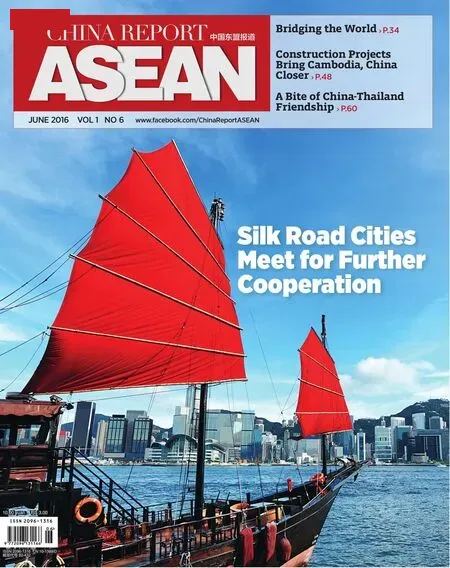The ‘Belt and Road' Initiative in Thailand
By Wichai Kinchong Choi
The ‘Belt and Road' Initiative in Thailand
By Wichai Kinchong Choi
The Belt and Road Initiative proposed by Chinese President Xi Jinping carries a special significance for countries in Southeast Asia and is set to play a decisive role in promoting the future development of regional economies.
For such a grand program, it is important to consider the nature of its implementation. How can it be a community of common interest, acknowledged by all countries concerned? How can the program win respect and support in Thailand?
Personally, I believe the following must be taken into consideration.
The Belt and Road Initiative can strike a chord only when it is closely aligned with sub-regional economies. After years of negotiation, deliberation, accommodation and coordination, the ASEAN Economic Community (AEC) officially started at the end of last year. With a population of 600 million, the gigantic AEC market is full of business opportunities. Thailand happens to be an important component of this market, with geographic advantages, modern infrastructure and reliable financial and legal systems. What's more, Thailand and China have a history of traditional friendship and the economic and trade relations between the two have been close for centuries. That makes it possible for Thailand to serve as a robust spring board for Chinese enterprises looking to access the AEC market.
The Lancang-Mekong Cooperation(LMC) mechanism has been well received by the six member countries in the Lancang-Mekong region (LM6). The five key priority areas of cooperation include interconnectivity and intercommunication, production capacity cooperation,cross-border economic cooperation, water resources, and agriculture and poverty reduction. The development in these areas will have a direct impact on narrowing the gap of economic development among the Mekong sub-regional countries, which will in turn promote the sustainable development of the sub-region's economy and society. As such, those living in the sub-region stand to benefit.
The LM6 countries are geographically connected and have maintained close cultural and people-to-people relations. The cooperation among these countries has a solid foundation, with bright prospects and huge potential. As a multilateral intergovernmental cooperation mechanism,the LMC will be conducive to enhancing mutual trust and understanding among member countries, which is sure to result in pragmatic, mutually beneficial cooperation.
In terms of overall economic strength,China and Thailand take the lead among LM6 countries. The LMC mechanism can help regional economies complement each other in resources for balanced development. Surplus production capacity in Thailand and China goes well with rich natural resources and low labor costs in Myanmar, Laos, Cambodia and Vietnam. All would benefit from a transfer of surplus production capacity from Thailand and China to other LM6 countries in an orderly manner. Sensible allocation of resources and production will enhance the region's global competitiveness.
Thailand possesses an integrated modern productive service industry, which makes it a retail center and logistics hub of the Greater Mekong Sub-region. What's more, consumers in Cambodia, Laos and Myanmar tend to like Thai fashion trends as well as shopping in Thai border towns or Bangkok's grand shopping malls. Residents of those countries also oThen go to Thailand seeking high quality medical care.
As an ancient Chinese saying goes,“Those who conquer the Central Plains conquer the whole country.” For Chinese investors, a modern adaptation of the saying could be: “Those who conquer the Thai market conquer that of ASEAN.”
An exaggeration? Perhaps. But considering its location and role as a commercial hub in the Indochina Peninsula, as well as its large economic scale, modern infrastructure, sound legal and financial systems and comparatively low political risks,Thailand has become a magnet for Chinese entrepreneurs and merchants investing and trading in the region.
To expand the influence of the strategic thinking behind the “Belt and Road”,it is crucial to strengthen exchanges, seek common ground while putting differences aside and clear up misconceptions. In recent years, I have participated in a number of symposiums on the Belt and Road Initiative in the Chinese mainland,Hong Kong and Thailand. All participants in such symposiums, either from governmental or nongovernmental organizations,sought to achieve a better understanding of the strategic vision and its implications. Meanwhile, they all explored potential business opportunities.
In Thailand, many overseas Chinese organizations have done much to boost the visibility of the Belt and Road Initiative. Seminars have given people a chance to gain a better understanding of the truth behind the initiative and the potential benefits of cooperation.
“High buildings rise from the ground,”so goes another Chinese saying. Since “Belt and Road” is a program built for the long term, I believe its success hinges on the understanding and participation of both governments and the public. Everyone has a part to play.

About the author:
Wichai Kinchong Choi is a Senior Vice President of the Kasikorn Bank of Thailand.

